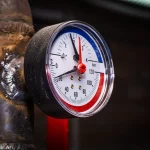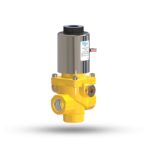Temperature variations can have an impact on a pressure gauge’s performance. The interior parts of the gauge may expand or contract as a result of temperature fluctuations, which could affect accuracy and dependability.
The performance of a pressure gauge is primarily impacted by two factors:
Zero shift:
When no pressure is applied to it, a pressure gauge is calibrated to read zero pressure. Although no pressure is exerted, temperature variations may cause the gauge’s internal parts to expand or contract, which may lead to the gauge reading something other than zero. Zero shifts is the term for this.
Span shift:
In order to produce an accurate reading of pressure within a given range, pressure gauges are also calibrated. Temperature variations, however, may cause the gauge’s internal parts to expand or contract unevenly, changing the gauge’s sensitivity or accuracy over its operational range. The span shift is this.
Pressure gauges may be built with temperature compensation elements to reduce the impact of temperature on their performance. These elements could include unique building materials and methods to lessen the impact of temperature variations on the gauge’s internal components, or they could involve the use of electronic compensation circuits to modify the output of the gauge in response to temperature changes. To ensure accurate and dependable operation, it’s crucial to carefully choose a pressure gauge with a temperature rating that fits the required working circumstances in addition to temperature adjustment.



